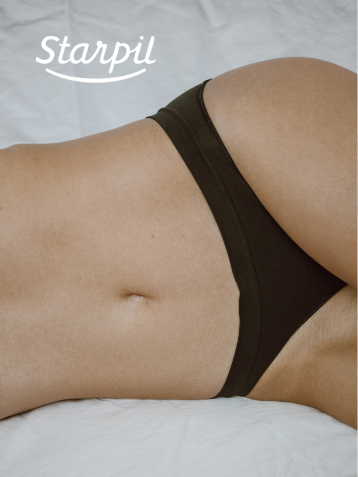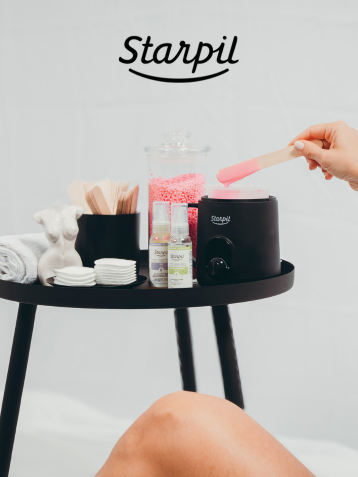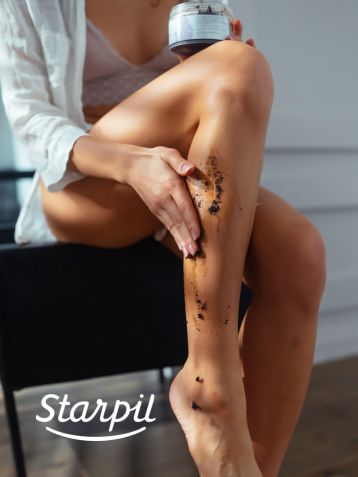Preventing and Treating Bruising When Waxing

Waxing is one of the most popular forms of hair removal, but it can sometimes result in bruising. This can be especially prevalent for those with delicate or sensitive skin or particularly sensitive areas.
Table of Contents
Understanding how to prevent and treat bruising when waxing can help ensure a more comfortable and ultimately successful waxing experience. In this blog, we'll explore the causes of bruising during waxing and provide tips on how to minimize its occurrence and treat it effectively when it does happen.
READ: Skin Lifting From Waxing: The Complete Guide
Can You Bruise from Waxing?
Though not a super-common occurrence, waxing can sometimes result in bruising, especially when waxing sensitive areas. Bruising occurs when small blood vessels under the skin break, causing blood to leak into the surrounding tissues. During waxing, the pulling action can sometimes cause these vessels to rupture or can damage tissue, resulting in bruising.
Factors that can increase the likelihood of bruising include:
- Thin or sensitive skin
- Certain medications (e.g., blood thinners)
- Poor technique or excessive force during waxing
- Skin not being taught during removal
- Dehydration
- Lack of proper skin preparation
If you’re concerned about bruising while waxing, don’t worry! It’s easily preventable and, if it does occur, easy to treat.
READ: How to Prevent Pimples After Waxing

Preventing Bruising Before and During Waxing
Taking preventative measures before and during your wax can significantly reduce the risk of bruising. Here are some tips to help you prepare for your waxing session:
- Exfoliate gently 24-48 hours before waxing to remove dead skin cells.
- Stay hydrated and drink plenty of water in the days prior to your wax.
- Avoid alcohol and caffeine for 24 hours before waxing, as they can increase skin sensitivity.
- Apply Starpil Pre-Wax Gel to properly prep your skin.
- Choose a high-quality wax suitable for your skin type and the area being waxed. We recommend Rosin-Free Pink or Starsoft Hard Wax if your skin is particularly sensitive.
If you're prone to bruising, consider asking your doctor about supplements to take that might help lessen the chance of it occurring during waxing.
During the waxing process, pay attention to the following:
- Ensure the wax is at the correct temperature and the right consistency.
- Perform a test strip on your wrist before applying to the application area.
- Apply the wax in the direction of hair growth and ensure it has a lip at the end for easy removal.
- Removal hair in the opposite direction of hair growth. Remain parallel to the skin and do not pull up.
- Hold the skin taut when removing the wax strip.
- Use smaller strips for more delicate areas to have better control.
- Apply firm pressure immediately after removing each strip to soothe the skin.
If you’re not sure if your wax is at the right temperature or consistency, you can always check out the helpful videos on our YouTube for how-to’s and helpful tips to get your wax right.
READ: Rashes After Waxing? What You Need to Know
Post-Wax Care for Minimizing Bruising
Practicing proper waxing aftercare is crucial in preventing and minimizing bruising. Follow these steps after your waxing session to keep skin in its best condition:
- Apply Starpil’s Post-Wax Lotion andPost-Wax Oil after waxing to soothe, hydrate and moisturize the skin while reducing inflammation.
- Apply an ice pack wrapped in a soft cloth to freshly waxed skin for a few minutes at a time to constrict blood vessels.
- Avoid hot showers, saunas, or steam rooms for 24 hours after waxing.
- Wear loose, comfortable clothing to prevent friction on the waxed areas.
- Refrain from going to the gym or engaging in activities that produce excessive sweat or friction for 24 hours.
- Avoid touching or scratching the waxed skin to prevent irritation and potential bruising.
- Stay out of direct sunlight and avoid tanning for at least 24 hours.
- Continue to stay hydrated to support skin healing.
READ: 5 Tips for How to Wax Sensitive Skin
Treating Bruises After Waxing
If you do develop bruises after waxing, don't worry! This is easily treatable. There are several ways to help heal your bruises faster:
- Continue applying ice for the first 24 hours to reduce swelling and discoloration.
- After 24 hours, switch to warm compresses to increase blood circulation and promote healing.
- Gently massage the area with Intensive Post-Wax Cream or soothing gel, which can help reduce bruising and inflammation.
- Apply vitamin K cream to help break down the pooled blood and speed up healing.
- Be patient – most bruises will heal independently within 1-2 weeks.
Remember, prevention is always better than treatment. By following proper pre and post-wax care techniques, you can significantly reduce the likelihood of bruising during waxing. If you consistently experience bruising or have concerns about your skin's reaction to waxing, consult with a dermatologist or professional esthetician for personalized advice.
READ: How to Treat & Prevent Ingrown Hairs After Waxing

Final Thoughts
Preventing and treating bruising from waxing isn’t an intensive process, but it goes a long way toward keeping your skin healthy. This way, you can enjoy your smooth skin without worrying about pain during the process or bruising afterward.
At Starpil, we're committed to providing high-quality, professional-grade waxing products that help minimize skin irritation or bruising and promote a smooth, comfortable hair removal experience. Always use the right waxing formulas for your skin type and practice the right pre and post-wax care process to keep your skin in its best condition. This way, you can enjoy the benefits of waxing while keeping your skin healthy and bruise-free.






Comments